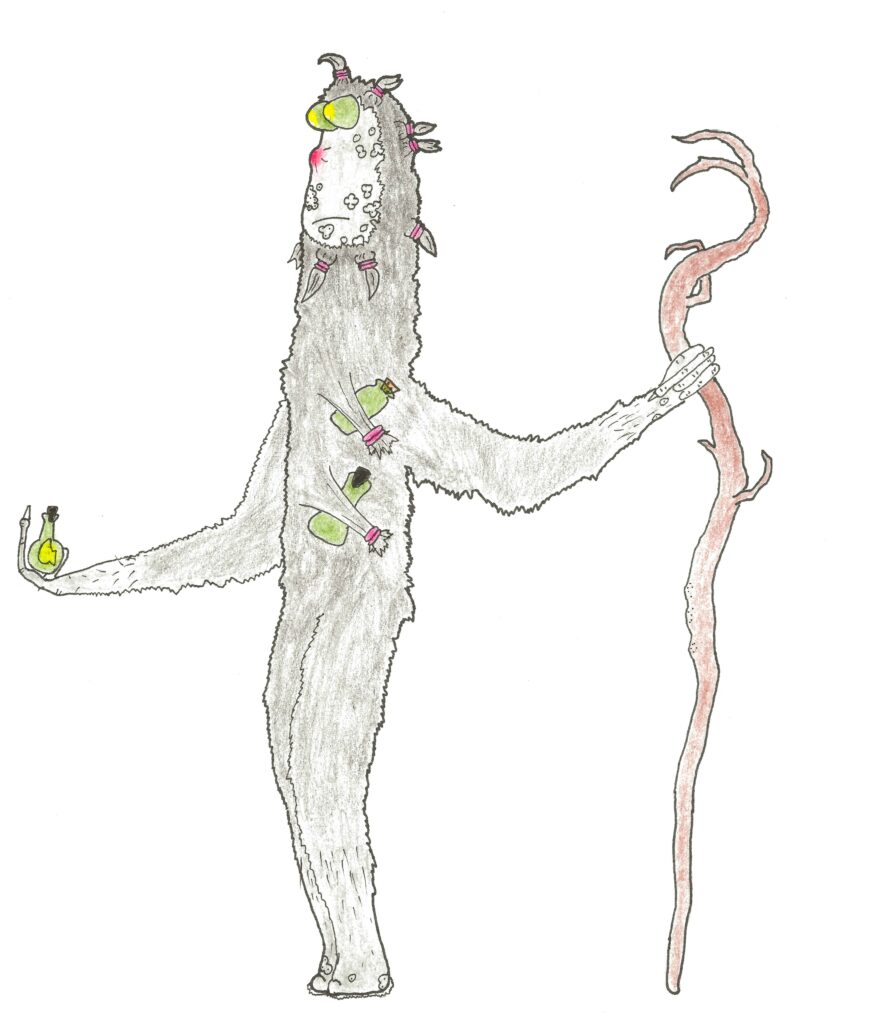
World: Jotunheim
Diet: Omnivorous, often eat carrion and insects
Height: 16’4″
Lifespan: 250 years
Habitat: Anywhere but arid landscapes
Activity Cycle: Nocturnal
Despite being diminutive by giant standards, plague giants often serve as bogeymen in the stories of other cultures. Part of this is their eerie appearance. Their grey flesh, so pockmarked it looks scaled, disturbs many, and their keen night eyes can be seen flashing in the dark if one happens to come by. But the true reason that they are feared by others is that every plague giant is an army unto themselves, carrying a horde of other beings in their flesh and fur. Even much larger
Every animal has its natural parasites, especially one so large as a giant. However, plague giants have transcended parasitism. They sacrifice their own flesh and blood to the beings who live inside their body, and in turn their parasites have become soldiers defending their home. Plague giants are solitary creatures, only companions the various sapient races adapted to grow within their own bodies, and each perfects their own mix of parasitic inhabitants.
Mating rituals depend on culture, but usually start with gifts left by a man on the border of a woman’s territory with a parasite messenger. If accepted (and in some cultures reciprocated), they may become distant, satellite lovers, meeting infrequently, allowing their parasites to diversify their own gene pools while they breed. The resulting child will live in their mother’s territory for several decades, often still seeing rare visits from their father.
With long, nimble fingers, plague giants are quite dexterous and make a variety of tools for living alone, from traps to fishing spears to sturdy baskets for carrying their minimal goods. They are also very happy to scavenge, and can eat even the most putrid of flesh without ill effect, another habit that does not endear them to other giants.

pHLVwMlrKIC